Nicolay Dance Works – Romance
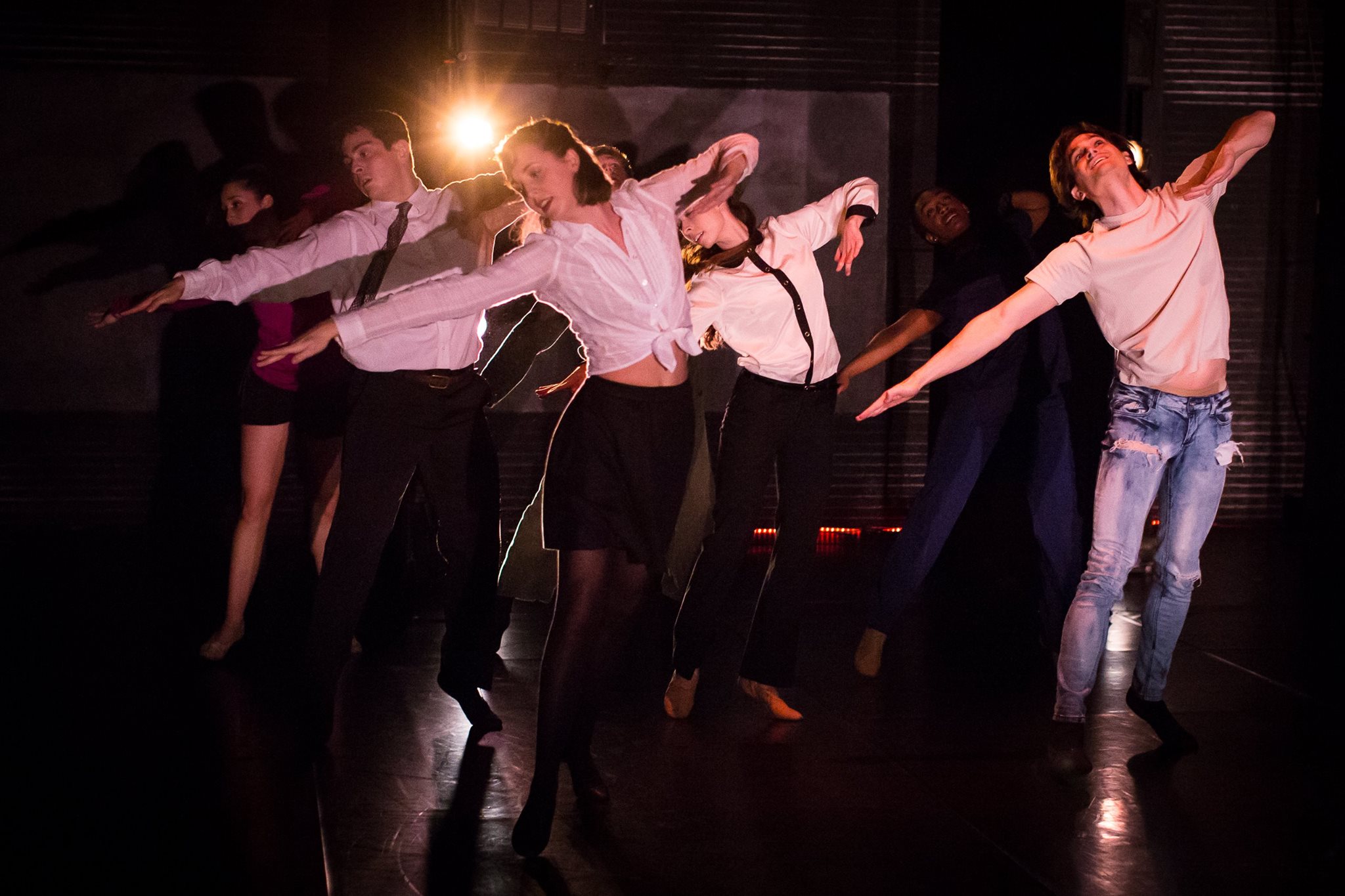
Photo by Lynn Lane
by Adam Castaneda
This year’s Valentine’s mayhem was marked by a number of love-themed dance concerts by several companies, including CORE Performance Company, METdance, VauLt, and Houston City Dance. The trend is not surprising. Love means many things to many people, and the physicality of dance certainly has a lot to say on matter. One company that joined in the conversation was Nicolay Dance Works, which presented Romance on February 12 and 13 at the Barn. Under the director of Dana Nicolay, professor of dance at Sam Houston State University, the company offered a selection of repertory works that explored the complexity of romantic relationships.
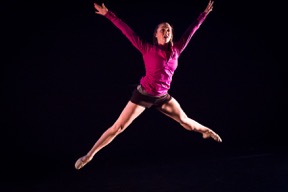
Rachel Cox in Romance. Photo by Lynn Lane.
The program opened with the title work, Romance, a crowd-pleaser that makes use of the company’s precision and musical prowess. I would imagine it’s quite a challenge to dance to a piece of John Adams’ music, especially The Chairman Dances; Adams’ music is big and sweeping, and evokes the grandeur of old Hollywood movies. Nicolay’s choreography is equally big and sweeping, with a central phrase that looks great in both unison and discord. As a company, the dancers are highly musical and adept at moving with the score’s decadent and layered flourishes.
Romance is plenty of fun, and imagines the contrasting worlds of the nine-to-five rat race and the evenings of romance spent with a significant other. The star here is the choreography, which is fast-paced, high-energy, and beautiful in its full use of the body.
The piece was followed by Chiaroscuro, a duet that takes its name from the intersection of light and shadow in compositional painting. Nicolay explained that in creating the piece, he used the binary of light and shadow as a metaphor for the exploration of the male and female aspect. It’s certainly a handsome duet, and dancers Miranda Colley and Tim Holocek are compelling stage presences, but I couldn’t help but feel that the central subject wasn’t fully probed. If this is a dance of contrasts, then it lacked tension and suspense.
The technique of chiaroscuro was seen most prominently in the Baroque era when painting favored the dramatic and sensational. Chiaroscuro is a messy business, magnifying the grotesque aspects of its subjects, and far removed from the idealism and classicism of early periods. In Nicolay’s Chiaroscuro, the partnering is pretty, but conventional, well-crafted, but cautious. There is no sense of the oppositional pull of the central forces.
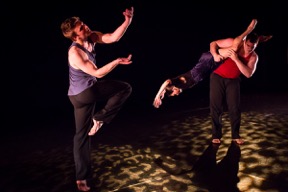
Cody Miley, Miranda Colley and Time Holecek in Alone, Again, Anew. Photo by Lynn Lane.
Going back to the idea of romance, perhaps what I was missing from the duet was a sense of the organic, a quality I did find in Alone, Again, Anew. The choice of music here is again well-known, and a bit iconic if one was an early twenty-something indie move junkie in 2007, which I was. Glen Hansard’s and Irketa Marklova’s early songs, popularized by the film Once, are heartbreakingly beautiful odes to blossoming love and romantic disappointment.
When I saw the music selections on the program, I was a bit worried. The problem with using popular music, whether vocal or instrumental, is the audience brings to the dance his/her own understanding and experience of the score first. Thankfully, Hansard’s and Marklova’s neo-folk accompaniment was handled well thanks to the inspired and collaborative nature of the choreography.
The movement in this piece is appropriately gritty and unrestrained. Pedestrian sequences disperse the larger movement phrases, giving the work a human and relatable quality missing from the other work on the program. The partnering is less elegant than in Chiaroscuro, but far more interesting to watch in complexity and diversity of transitions, shapes, and exiting movements.
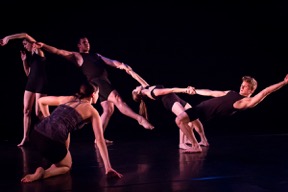
Kaylee DeMetrotion, Tim Holecek, Rachel Cox, Cody Miley and Miranda Collet in Mes Amis. Photo by Lynn Lane.
The program ended with Mes Amis, a quintet that brought to life various youthful archetypes. I’ve seen this piece before, and perhaps the most interesting aspect is the many suggestive moments between these five supposed friends. There are moments of eye contact, moments of sensual touch, that suggest a volley of narratives that far beyond the scene playing out on stage. I feel like I want to know these untold stories, and I feel like I want to know more about these five characters, each with his/her own movement vocabulary and movement quality. But the dance itself is also engaging, and perhaps more so that the other pieces because the choreography is allowed to stand on its own two feet, for me at least. It’s danced to more John Adams, but a less imposing piece of music that allows the viewer to experience the full weight of the supple choreography, effortless lifts sequences, and playful floor work. In wanting to know more about these characters, however, I would go as far as to say that I wished there was less choreographic order here.
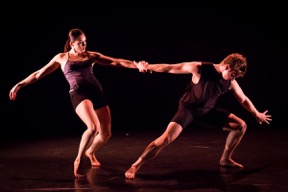
Miranda Colley and Cody Miley in Mes Amis. Photo by Lynn Lane.
These are very young people, and the lives of the very young are inherently chaotic, turbulent, and messy in every sense of the word. There is a careful sense of order to Mes Amis, as there is with the entire program, that keeps it from ever really digging into the psychologies of the characters it presents.
Adam Castaneda is a dancer, writer, and arts administrator. He is the Executive Director of FrenetiCore, and performs with Suchu Dance, Holding Space Dance Collective, Heather VonReichbauer, and Intuitive African Dance and Drum Culture.



Recent Comments